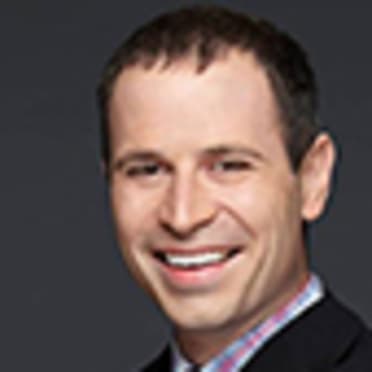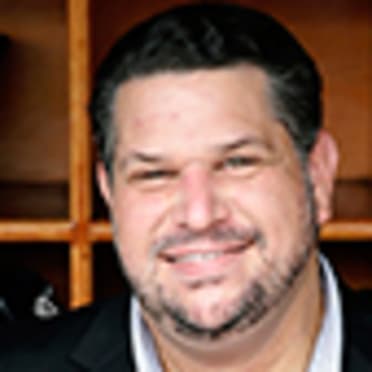Breaking down what's next for Hot Stove
MLB.com's roundtable talks deadline surprises, free agents to watch
Now that we are past the non-tender deadline and with free agency in full swing, it’s time to examine where the offseason goes from here. A roundtable of MLB.com reporters discussed deadline surprises and which players to keep an eye on as we get deeper into the Hot Stove season.
Alyson Footer (@alysonfooter, moderator): Let’s start with an overall reaction to the non-tender deadline (or tender deadline, depending on how full your glass is). There were a few more non-tenders than last year, but there wasn’t a dramatic jump I think some in the industry predicted. We’ll get to specific players in a bit, but in general, did anything surprise you?
Jon Paul Morosi (@jonmorosi, reporter, MLB.com and MLB Network): Eddie Rosario was a surprise for me. Archie Bradley probably even more so. When the Reds acquired Bradley at this year's [Trade] Deadline, plenty was made of the fact that they'd control him for 2021. Obviously, Dick Williams has departed the organization since then, but this struck me as a move that was clearly influenced by COVID-19-related economic realities for a smaller-market club.
Mark Feinsand (@Feinsand, executive reporter): The number of non-tenders wasn’t nearly as high as most had projected, but what we saw was a massive number of “pre-tender” deals, which, had those not happened, would have resulted in many more non-tenders.
The bizarre nature of 2020 made those pre-tender deals more sensible. There’s so much uncertainty -- will there be fans in the stands in 2021? What exactly will the arbitration process look like coming off of a 60-game season? -- that for teams, these deals provided cost certainty, and for players, it provided some job security. A number of those deals were actually guaranteed, which is not common for pre-tender deals. So in those cases, it provided a true sense of security.
Morosi: Mark makes a great point about the influence of the pre-tender deals. And while there hasn't been a ton of time since the tender deadline, it's worth noting that we haven't seen a deluge of signings among free agents.
Jordan Bastian (@MLBastian, Cubs beat reporter): Overall, it looked like a fairly normal list of non-tenders, compared to other seasons. What did seem different -- to Mark's point -- was how many players struck deals before the deadline. Typically, you'd see those type of deals on the salary-exchange date. They came earlier in the offseason schedule this year. But there were a couple non-tenders that may have been tenders in a "normal" winter. Kyle Schwarber would definitely seem to fit that category.
Morosi: Some observers thought that the tender deadline would bring immediate clarity to the overall market, leading to a spike in the number of signings in the immediate aftermath. That hasn't happened. It's possible that clubs, and therefore agents, still are waiting for clarity on the DH rules for the NL in 2021.
Feinsand: Not to mention their payroll budgets.
Morosi: The information on feasibility of fans in the stands for 2021 is probably just as significant. As we know, those projections are evolving in real time. I had one agent tell me recently that the offseason routine felt similar to him -- in other words, activity cresting during the week of the Winter Meetings. Well, we're running out of time for that to be true.
Bastian: To Jon's point, one of the biggest obstacles for front offices right now is the lack of clarity over things like the universal DH, roster size, etc. That had made some of the decision-making challenging, and some of those things will probably need to be ironed out before the offseason really picks up. Especially because there are no more real winter "deadlines" to spur activity. The tender deadline was the last big one.
Feinsand: I know people love to focus on how baseball free agency drags compared to the NBA and NFL, but that’s always going to be the case without a salary cap. I think people are overlooking the pandemic factors this year; it’s not just about how much money teams may have lost, but what their 2021 projected revenues look like. And given the uncertainty in the country, I don’t think they have any idea yet.
Bastian: Using the Cubs as an example, Mark, new president of baseball operations Jed Hoyer (while being close to the vest on numbers) has said he is keeping a payroll "range" in mind based on various scenarios. Will there be fans in the stands? Will the season start on time? The Cubs have to project multiple budgets in light of all the uncertainty and be ready to then react once some pieces fall into place on the rules front.
Morosi: If we don't see some major signings early next week, then I think a lot of teams will idle through the holidays and come back in the new year when there's a little more information about what the in-ballpark revenue streams will look like. I had a GM tell me this week that we're still in a phase of learning what the "new normal" will look like.
Feinsand: Remember, it was just two years ago that Bryce Harper and Manny Machado -- the two biggest free agents we’ve seen in years -- waited until February to sign. This is the way it works.
One more number for you: Last week, there were 235 players who had earned enough service time to be arbitration eligible this year. Forty-one were non-tendered, while 58 signed deals. So that’s 99 players who could have gone to arbitration who no longer will. That’s an astonishing figure. It shows how teams and agents are approaching the winter.
Footer: Some of the non-tendered players now entering the free-agent market could clog things up a little bit. How does the addition of players like Schwarber, David Dahl and Nomar Mazara affect other lefty hitters (Jackie Bradley Jr., Joc Pederson, etc.)?
Morosi: I think Bradley's market remains strong, because very few people can defend like him. He's one of the top 10 defenders in the game, regardless of position. There is extraordinary value there.
Bastian: Kyle Schwarber suddenly becomes a hot commodity, especially if the DH sticks in the National League. There's mutual interest in trying to keep Schwarber in Chicago on a more team-friendly deal, but the addition of a real power bat to the market could create a situation where it just doesn't make sense for him to stay put.
Feinsand: Schwarber will be a hot commodity, but let’s not forget he’s coming off of a subpar season. Teams will factor that when making him offers.
Morosi: Dahl and Mazara are somewhat related, in that you're assessing whether your club has the right circumstances to get them on track again.
With Dahl, health is obviously an issue. When he's on the field, though, he's a dynamic player. He's intriguing to me. Playing the outfield at Coors is one of the more rigorous jobs in baseball, which is a bad fit for a player who's had trouble staying healthy. Put Dahl in an easier travel/altitude situation, and he could thrive.
And I'm calling Schwarber to the Marlins. Young team, and he's someone who has won before. Their current first basemen are right-handed.
Feinsand: One thing we need to keep in mind for some of these players: The ones who have more than one year of control remaining will be of more interest. Signing a player under club control for two or three years essentially gives teams club options on those guys. They can always non-tender them next year if the price gets high, but teams love flexibility and options.
Bastian: That's actually an interesting dynamic for a few of these players. It's nearly impossible to truly evaluate a player's 2020 with the sample size being so small. The numbers mean very little. Consider that Schwarber had a .996 OPS in the final 60 games of 2019, only to then have a .701 OPS in the shortened '20 season. [Combined] that's still 42 games shy of a normal year! Still, even knowing that you can't read too much into the 2020 stats, players were definitely dinged for the subpar '20 production when push came to shove at the non-tender deadline.
Morosi: We're going to be in a situation where more teams are calling on some of the non-tendered players [rather] than George Springer. Obviously, Springer is the more valuable player, but fewer teams are going to be comfortable at that price point.
Footer: The added challenge for teams will be trying to figure out if a “down” year for a player in 2020 is actually an indication of how he’ll perform moving forward. In a 60-game season, there wasn’t time to (pulls out cliché book) get hot down the stretch and turn it on in the second half. How does that muddle things as teams decide who they might want to pursue?
Morosi: I think it favors teams with a well-established process and belief in their system. In other words: Did our analytics department detect a possible uptick in the player's performance over the last two to three weeks of the season? And do we have the coaching staff/manager to take that performance and mold it into something enduring?
This is why the Dodgers traded for Corey Knebel, and why that move is likely to work. Knebel showed some encouraging signs late in the season, and now he's the new Blake Treinen. The Dodgers have the budget to take that chance; not many other teams do.
Feinsand: The 60-game aspect muddles everything from arbitration to free agency to the trade market. Multiple executives have told me that it’s nearly impossible to calculate exactly what a player’s performance during the shortened season means long term.
Teams will point to players who had great 2020 seasons and say, “It was only 60 games.” Agents will point to players who had down years and say, “It was only 60 games.”
Bastian: Right, some players just ran out of runway, so to speak. Or, on the flip side, a guy who was hot for 60 games didn't have the chance to cool off and maybe show that it was a fluke. That's where teams are going to have to dig into the peripheral numbers or use other avenues of evaluation rather than just the misleading surface stats. Or, consider context as well. Kris Bryant had an awful season, but he did not play a day while feeling 100 percent. Teams will have to dig into underlying rates, contact numbers, which pitches players were attacking, etc. And then have to do some educated guesswork.
Morosi: Bryant to me is so fascinating. I want to believe in him, because we've all seen what he can do. Then again, his exit velocity over the past several seasons worries me. The consistency of hard contact has not been there, yet it won't surprise me if Bryant puts up MVP numbers again in 2021.
Bastian: The alarming stat for Bryant is that the hard-hit rate has dropped over the 2018-20 seasons. But, context is big there once again. He was actually very good in 2019, but the injuries in '18 and '20 really impacted the production over that three-year window. That said, players breaking down as they get older is a part of the game, unfortunately. And with Bryant's frame, maybe he's more susceptible to getting banged up. That's something the Cubs and other teams potentially looking to either trade for Bryant or pursue him as a free agent next winter will have to think long and hard about. Because when he's healthy, he's one of the best hitters (and baserunners, too) in baseball.
Morosi: Per Baseball Reference, Bryant's best statistical comps through [age] 28: Richard Hidalgo, Larry Walker [and] Danny Tartabull. So where does the story go from here?
Feinsand: Those are three very different players, J.P. And only one was ever on "Seinfeld."
Morosi: Precisely! Walker is in the Hall of Fame. So the path is still there for Bryant. But clearly he'll need to adjust.
Feinsand: Here’s another thing I found fascinating about this week: We heard so many big names rumored as non-tender candidates: Kris Bryant, Gary Sánchez, Tommy Pham, yet none of those guys were cut loose.
Morosi: Of that group, I really thought Sánchez would be non-tendered.
Feinsand: I thought the Twins did right by Rosario, which may sound odd to say. But they put him on outright waivers the day before the deadline, so if another team wanted to pick him up and pay him in his third year of arbitration, they could have. He went unclaimed, which shows the entire industry felt the same way that the Twins did. Now Rosario knows his market, which could mean a reunion with the Twins at a lower salary. Frankly, I’m surprised more teams didn’t take this approach with some of their non-tenders.
Bastian: When looking at the list, were there any players you guys thought would be sneaky-good pickups? I think Hanser Alberto could fit that description. His contact rate is fantastic (85.5 percent in '20), and he can hit lefties (.375 average in '20 and .398 in '19) while playing a decent second base. Somebody could be very happy with plucking him on an affordable deal.
Feinsand: I agree with you, Bastian. He has become a very good, useful player. The Orioles decided to sign Yolmer Sánchez instead (who I also like, and who I know is a big fan favorite on the South Side based on my Twitter feed), but Alberto will be a good pickup for somebody.
Morosi: My pick for a sneaky-good pickup: Curt Casali. I think he's a solid catcher. He had a 126 OPS+ this year! Small sample size, I know, but that's pretty good for a catcher.
Remember the Tigers drafted Curt Casali. I could see him coming back to Detroit. I think [Tigers manager] A.J. Hinch would like working with Casali.
Feinsand: Brian Goodwin is another guy who I think is underrated. Another interesting player: Maikel Franco. Franco’s age-27 comp on BR [Baseball Reference] is Tim Wallach, who was a pretty darn good player.



